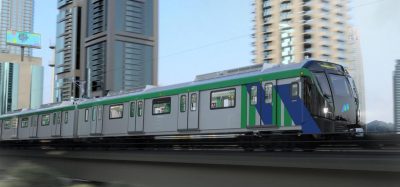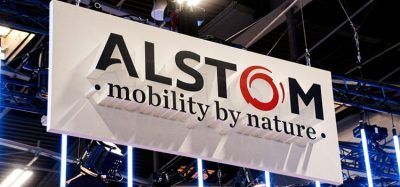Alstom & its Chinese JVs to supply advanced traction & signalling systems
Posted: 24 February 2011 | | No comments yet
Alstom & its two Chinese JVs have been awarded two contracts by Beijing MTR Construction Administration Corp., totaling €140 million…
Alstom & its two Chinese JVs have been awarded two contracts by Beijing MTR Construction Administration Corp., totaling €140 million...
Alstom and its two Chinese joint ventures have been awarded two contracts by Beijing MTR Construction Administration Corp., totaling €140 million, to provide both advanced traction and signalling systems for the new Line 6 of the Beijing metro.
Beijing Line 6, which represents the longest metro line in construction in Beijing, is 42 km long with 27 stations, and runs through the city, starting from Wuluju in the West to Tongzhou New Town in the East. As Beijing’s first metro line of large capacity adopting 8-car train sets, it travels at 100km/h with a 3-minute headway. The entry into commercial service of Beijing Line 6 Phase 1 is planned in 2012.
The first joint venture, Shanghai Alstom Transport Electrical Equipment Co., Ltd. (SATEE), will provide a traction system with the latest technology named OPTONIX for the 512 metro cars (64 8-car train set). OPTONIX, specially designed and developed by Alstom for the Chinese market, reduces travel time and increases frequency of the train operation. Furthermore, it allows the train to consume 30% less energy than a conventional metro. Already implemented on Beijing L15, this system is now fully operational since the end of 2010.
Join our free webinar: Rail cyber-security in a time of technological and regulatory transformation
Join our expert panel, including speakers from Nokia and Siemens Mobility, to explore the critical convergence of cybersecurity and 5G rail comms.
Date: 3 Dec | Time: 15:00 GMT
Can’t attend live? No worries – register to receive the recording post-event.
In parallel, the second joint venture, CASCO, will deliver an advanced train control and signalling system to Beijing Line 6. The metro line 6 will be equipped with the Urbalis Communication-Based Train Control (CBTC) system that integrates network communications with data transmission by radio. Already implemented on Line 2, Alstom’s Urbalis CBTC system reduces the intervals between trains in order to ensure passenger traffic of over one million passengers per day.
“These are significant contracts for Alstom as they show continued confidence of Beijing MTR in Alstom’s technologies — for a city that is rapidly building one of the worlds largest metro networks. Through Alstom’s long term partnerships and CASCO and SATEE joint ventures, as well as our strong localization strategy in China over the recent years, we have successfully delivered numerous metro projects, thereby creating a mechanism to best respond to the mass transit market growth in China”, stated Dominique Pouliquen, President of Alstom Transport Asia Pacific and Alstom China Country President.
Over the past 7 years, Alstom has put in service its Urbalis advanced signalling systems on 7 metro lines in China1. In addition, Alstom has also supplied over 1600 metro cars and related traction systems in China, including more than 1,200 Metropolis metro cars and traction systems for Shanghai2.
References
- Beijing Line 2, Fangshan Line, and Airport Express Line; Shanghai Line 3, Line 4, and Line 10, and Shenzhen Line 2.
- Line 3 – Pearl Line/ Line 5 – Xin Min Line/ Line 8 – Yangpu Line / Line 6 – Pu Dong Line/ Line 1 extension 2 / Line 2 West Ext and Eastern Ext / Line 10), 456 Metropolis metro cars and traction systems for Nanjing (Line 1 / L1 Southern Ext/ Line 2 / L2 East Ext) as well as over 1,400 metro cars to Hong Kong MTR (East Rail Line, Tsuen Wan Line, Island Line and Kwung Tong Line.
Stay Connected with Global Railway Review — Subscribe for Free!
Get exclusive access to the latest rail industry insights from Global Railway Review — all tailored to your interests.
✅ Expert-Led Webinars – Gain insights from global industry leaders
✅ Weekly News & Reports – Rail project updates, thought leadership, and exclusive interviews
✅ Partner Innovations – Discover cutting-edge rail technologies
✅ Print/Digital Magazine – Enjoy two in-depth issues per year, packed with expert content
Choose the updates that matter most to you. Sign up now to stay informed, inspired, and connected — all for free!
Thank you for being part of our community. Let’s keep shaping the future of rail together!






